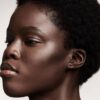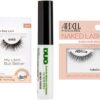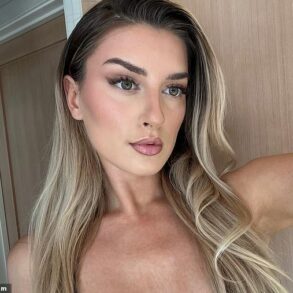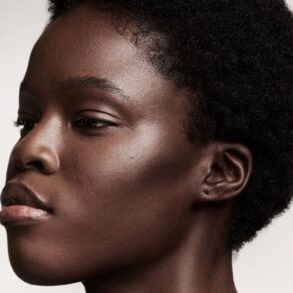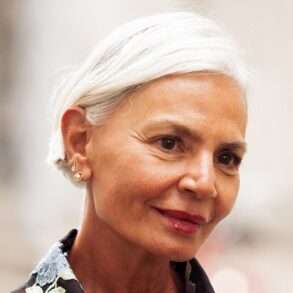A dashing Leonardo DiCaprio, playing Frank Abagnale Jr. in the iconic Catch Me If You Can, strides confidently through the Miami International Airport. He walks hand in hand with eight flight attendants, all finely dressed, stopping a group of nearby men in their tracks.
“Did you see the blonde out front?” one man whispers to his companion.
“I should have been a pilot,” laments another. The scene continues with the men craning their necks for a glance at the women.
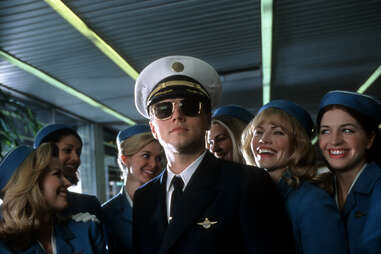




Let’s face it: In the world of aviation, flight attendants have stereotypically been associated with an elegant, stylish, and “sexy” sense of fashion curated for the male gaze. Over the years, the evolution of flight attendant uniforms has been fascinating, reflecting not only changing fashion trends but also societal values and gender norms. Today, as the aviation industry grapples with issues of gender inclusivity and diversity, flight attendant uniforms are at the forefront of this transformation, challenging traditional gender roles and pushing the boundaries of binary clothing norms.
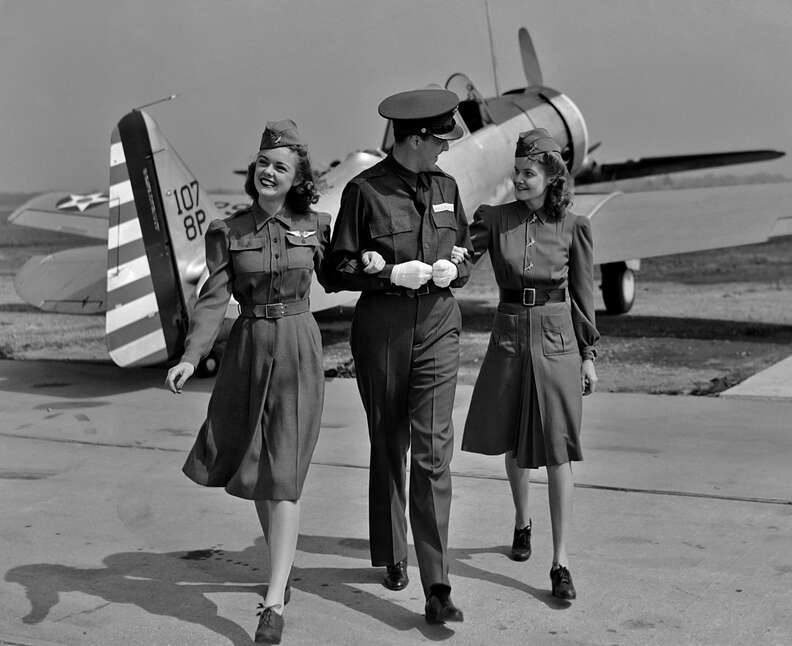







Echoes of uniforms past
The history of flight attendant uniforms is a reflection of the changing social and cultural landscape of the 20th century, heavily influenced by fashion and the political landscape. For instance, on the heels of World War I, the first commercial flight attendants were dressed in uniforms that reflected wartime aesthetics, according to Jessie Frances, a fashion historian and stylist.
“Their uniforms were extremely structured suits that were reminiscent of military attire. Greens and grays were used to construct wool skirt suits, capes, and hats,” Frances explains.
As life moved further away from the war, so did that color palette and style. Inching into the ‘50s and ‘60s, fashion designers began to create fashionable, on-trend uniforms for stewardesses, at the time a growing profession that was reserved mainly for women. Airlines recognized the marketing power of attractive, stylishly dressed young women serving their predominantly male business travelers, and subsequently the uniforms became much more feminine and body-conscious, though they were impractical to meet the demands of the job.
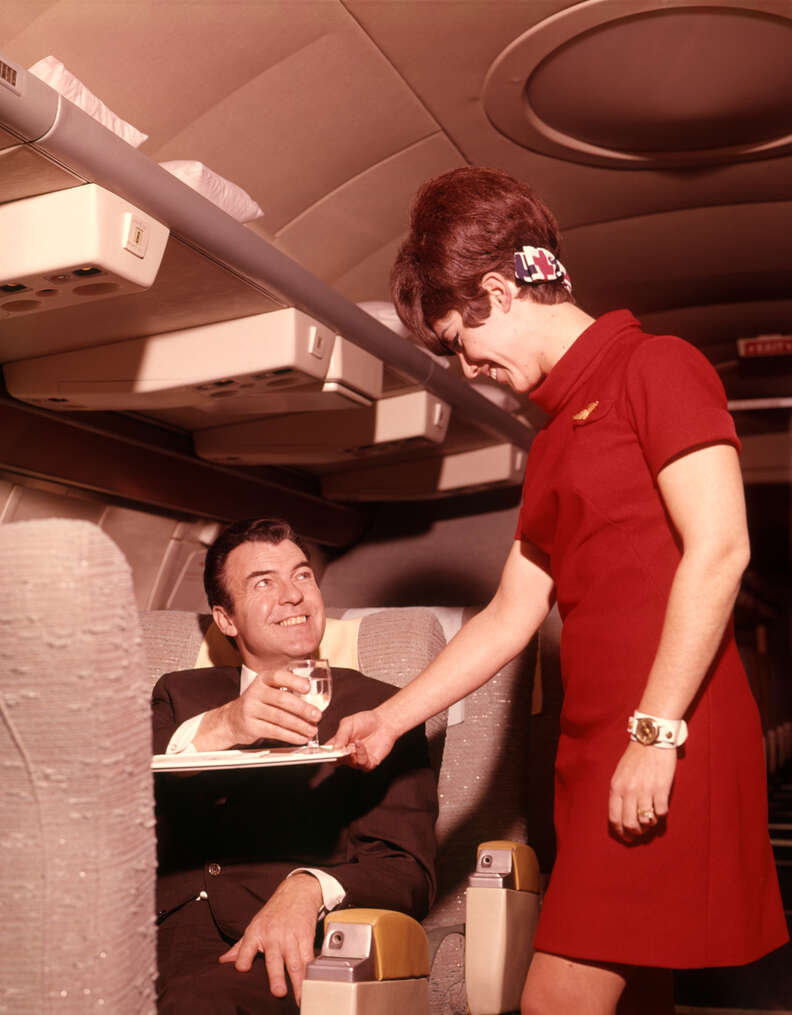







According to Frances, flight attendant clothing at the time included mini skirts, minidresses, hot pants, pillbox hats, plaids, and even furs. As the ‘70s approached, the uniforms once again transformed to include vibrant colors, bell bottom pants, and patent leather trench coats, in keeping with current trends. They were often sexier than they needed to be, reflecting the power dynamic between genders at the time.
“Being a stewardess was a female profession. Just like in their households where women served their spouses and their families, on a plane, women were attending to patrons to make sure they were comfortable,” explains professor and fashion historian Deirdre Clemente. “We now look at the past with the eyes of 2023, but at the time, people wouldn’t have batted an eye at what was worn on airplanes.”
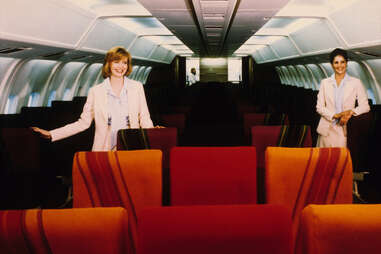







Shifting toward modern attire
As the women’s liberation movement gained momentum in the 1970s and ‘80s, women demanded the option to select their own workwear. Airlines recognized the need to move away from the objectification of their staff and began introducing more practical, businesslike attire.
“The visible presence of women in professional settings was part of the shift and these women wanted to stop playing to regular ideas of femininity and instead choose functionality,” Clemente explains.
As a result, uniforms featured longer hemlines, blazers and trousers, and clothing that created a more egalitarian image less focused on traditional notions of femininity. But the labor movement wasn’t the only driving force. According to Clemente, a rise in the fashion industry, coupled with its hunger for innovation, contributed to an era where uniforms matched the “pulse” of women; in other words, fashion was capitalizing on cultural change and pushing the boundaries of what women would buy.
“There was a rise in the corporatization of fashion, because the fashion world was experimenting with different styles, patterns, lengths and testing what women were latching on to and what they resisted,” Clemente says.
Moving into the 1980s and ‘90s, style became more subdued. Simple skirt and jacket suits in navy, black, or gray created a professional, corporate look.
Of course, this change was not welcomed by all; critics could not grapple with the agency women exhibited over what they wore. As a result, despite the changes in social rules, Clemente describes how uniforms were regulated in subtle ways through dress codes and limitations. Many workplaces started dictating what was and wasn’t allowed and codifying these rules as part of their official company uniform policies, though women continued to resist these forced behaviors.
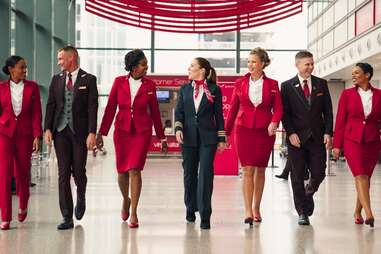







Embracing inclusivity today
In recent years, flight attendant uniforms have continued to evolve in response to shifting cultural norms and the need for inclusivity. Today, most major airlines have separate uniform designs for male and female attendants, which many feel perpetuates binary stereotypes. The discussion is no longer simply about less provocative outfits for women, but introducing gender-neutral clothing choices that align with each flight attendant’s individual gender identity.
In response, some airlines like Virgin Atlantic and United have introduced more gender fluid options. Virgin added trousers and flats to female uniforms along with neckties for either gender. United debuted gender-neutral pieces like tunics and pants that anyone can mix and match.
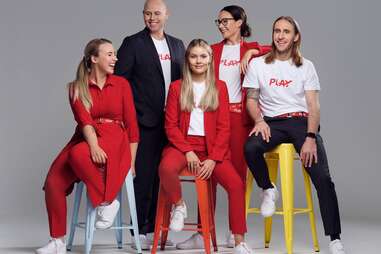







“At my current company, they just updated uniform regulations, which now allow men to wear dresses and skirts as well,” says Demi M., a flight attendant with TUI Fly. “I think it’s because people are more open to different ideas and people want to dress as they feel.”
Styles have also begun to trend a bit more casual, prioritizing function in addition to fashion. This means airlines are opting for more breathable, flexible fabrics to optimize the comfort of their staff, as well as relaxing makeup policies.
For instance, budget carrier PLAY Airlines now offers its cabin crew gender-neutral uniform options to express themselves with mix-and-match pants, T-shirts, sweatshirts, blazers, and more in PLAY’s signature red—and pairs these with sneakers. In addition to the uniforms, PLAY has also removed rules regarding hair, makeup, tattoos, and nail polish for its staff.
But that doesn’t mean you won’t be able to identify flight attendants in the air. “With relaxed, gender-neutral uniform options, in PLAY’s iconic red, passengers enjoy the uniform’s style, and they can’t miss their cabin crew because they are so recognizable,” says PLAY CEO Birgir Jónsson. “PLAY’s friendly and attentive cabin crew’s goal is to make passengers feel comfortable.” And with all they do for their passengers, why shouldn’t flight attendants be comfortable, too?
As for where flight attendant fashion is headed next, your guess is as good as mine. But whatever happens, you can bet that the uniforms will reflect the social and cultural landscape of the future.
This post was originally published on this site be sure to check out more of their content.


